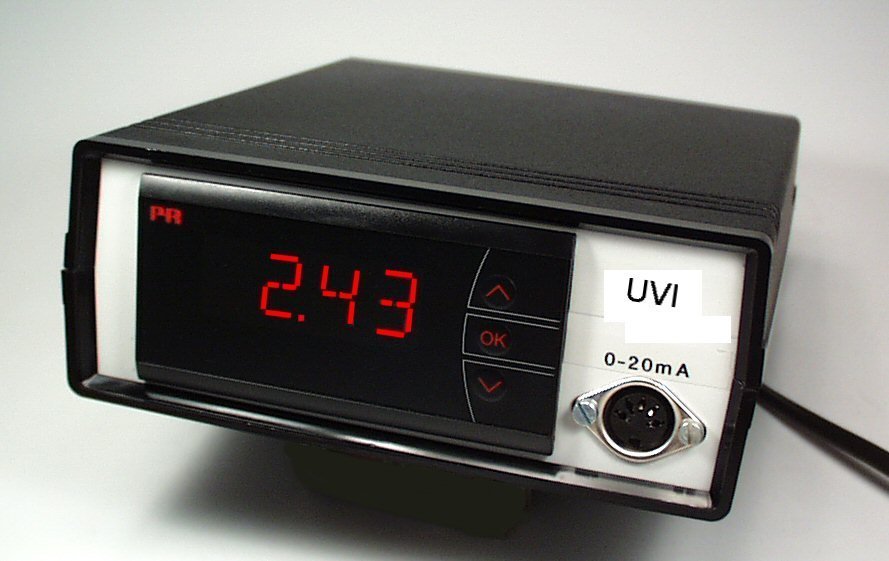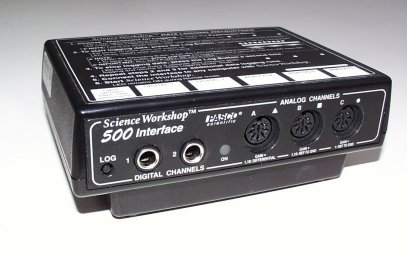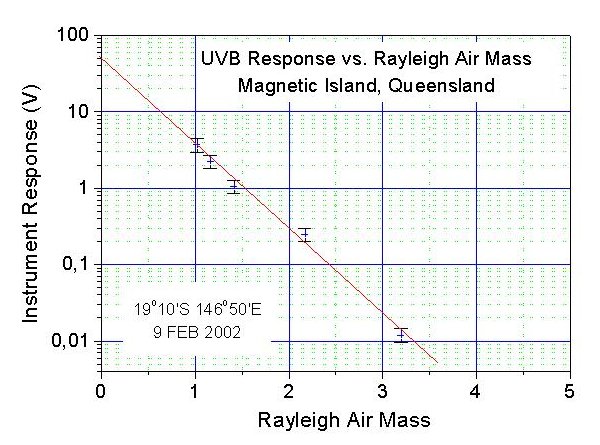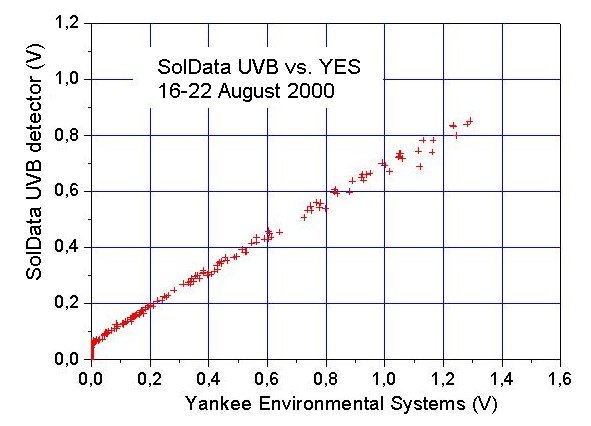SPECTRAL RESPONSIVITY
The spectral responsivity of the instrument closely follows the CIE erythemal response curve shown at the right (CIE JG 17-22, 1987). The graph shows how human skin sensitivity to erythema (reddening/burning) varies with wavelength. The same response curve is believed to describe the skin response leading to skin cancer. The unit MED (minimum erythemal dose) is the minimum UVB exposure which will cause a detectable reddening of the skin for an average person. This corresponds to a total dose of 210 J/m2.
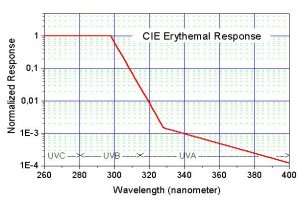
CIE Erythemal response to UV radiation.
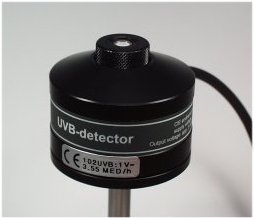
The SolData UVB detector uses a SiC photodiode with CIE 87 response.
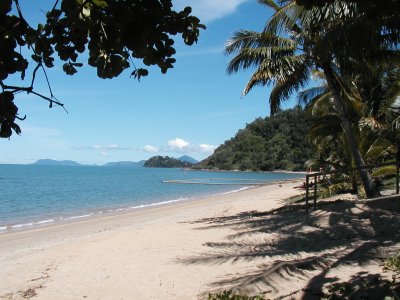
In the tropics UVB exposure can be extremely high. Skin protection here is essential.
| Mass: | 100 gram |
|---|---|
| Diameter: | 59 mm |
| Height: | 52 mm |
| Cable: | 120 cm, 5 pole DIN |
| Detector: | SiC photodiode |
| Spectral response: | CIE 87 |
| Spatial response: | Cosine |
| Supply voltage: | 5-12 V DC (< 1 mA) |
| Output voltage: | 1 volt/6 UVI |
NB: 1 UVI = 1 ultraviolet intensity unit
| Use a SolData battery box (type 102DBX) and a standard digital voltmeter as your readout. | ||||||
|---|---|---|---|---|---|---|
| The 5 pole DIN connector is compatible with the widely used PASCO Science Workshop ®. | ||||||
|
5 POLE DIN CONNECTOR PIN CONNECTIONS
|
